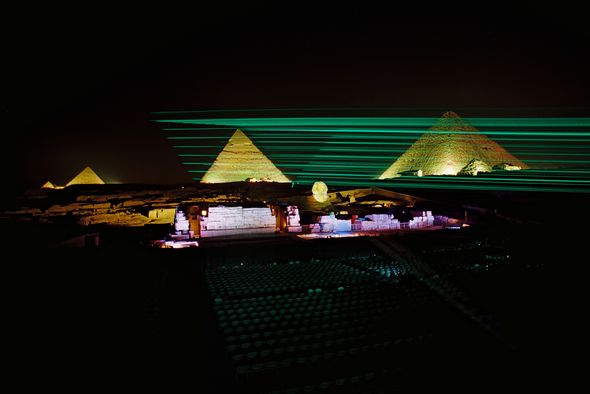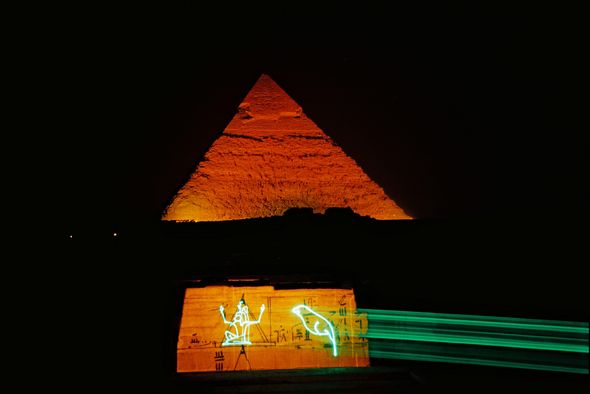Pyramids of Gizeh
Fix installation
The pyramids of Gizeh rank among the most famous buildings of mankind. They are the only surviving of the Seven Wonders of the Ancient World. Until 1888, when the Eiffel tower was built, they were regarded as the largest buildings in the world.
In 2005, Toon Thellier was asked to alter and revise the sound and light show attended by thousands of visitors every evening and to adjust technology to the demanding requirements of a modern show control system. Based on the very positive experience gained through the implementation of the Philae Temple installation in 2004, which has been in operation without any problems ever since, he again decided to use control technology by AV Stumpfl.
The basic concept is similar to that of Philae Temple, i.e. it uses multi-channel sound in eight different languages combined with an extensive light show giving the visitors an impression of the historic importance of these buildings. What is new is the integration of a laser system and of two ETC large-size projectors which are permanently synced to 25-frame SMPTE timecode generated by the SC Master 16.
The huge dimensions of the buildings also require corresponding technology. As mentioned before, 2 lasers with an output power of 30 W and two ETC projectors are used, which are synced to timecode. The pyramids are lit in RGB Mode so as to produce the corresponding colour atmosphere in line with the show dramatization. For this purpose, 77 x 50 amp dimmers, 26 x 32 amp dimmers and 8 x 16 amp dimmers are used. This corresponds to a total luminous power of 1,058,200 Watts! The individual stations are linked up via a 2-km long fibre optic cable which is used for supplying the DMX signal.
In the vicinity of the stand 7 loudspeakers have been installed, with the nearest having a power of 2 x 300 W and the ones further away one of 4 x 300 W. The loudspeakers are driven by 22 audio amplifiers at 300 W each. The entire show is controlled via one SC Master 16 only! In addition to this, one SC Net DMX512 Module for light control and one SC Net OpenCollector Module for switching functions, such as park and stage lighting and PLC control, are used.
For such a highly popular tourist attraction which draws very high numbers of visitors every day, operating reliability is of major importance. This is why extensive measures have been taken to guarantee that no problem spoils the visitors' enjoyment. An identical system is installed as a backup, which runs in sync with the show and is able to continue the show whenever there is a failure. Both systems are connected via a serial RS23223/USB port to the control PC, which runs the control software developed by Toon Thellier.
This software enables the operator to start the main show in the corresponding language while at the same time allowing perfect control of the devices during the entire presentation via acknowledgements from the SC Master units. The control panel is also used for direct volume control via the SC Master 16. It also includes a comprehensive test function to check all light channels and loudspeakers.After starting a show, synchronization of the two SC Master units is verified. In case of an error, the operator has two more attempts to sync them up. If they fail, the show is run on one SC Master only. If the first SC Master 16 unit fails, the slave, i.e. the second unit, immediately takes over. The entire system is fully redundant, and is also independent of the operator PC. The show itself is split up into 12 sections, which, due to the integrated show logics of the SC Master units, are played seamlessly one after the other. This sectioning enables the operator to resume the show at a certain location after a complete system crash, without having to start again from the beginning. A UPS ensures continuous power supply and is also used for connection of the SC Master 16 units. During a power failure they are automatically put into Pause Mode, so that the show, after the mains supply is resumed, can be continued at exactly the same location where it was interrupted.


